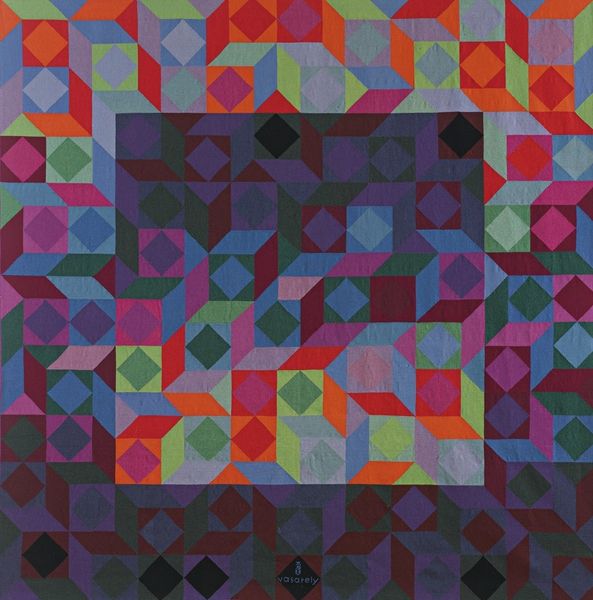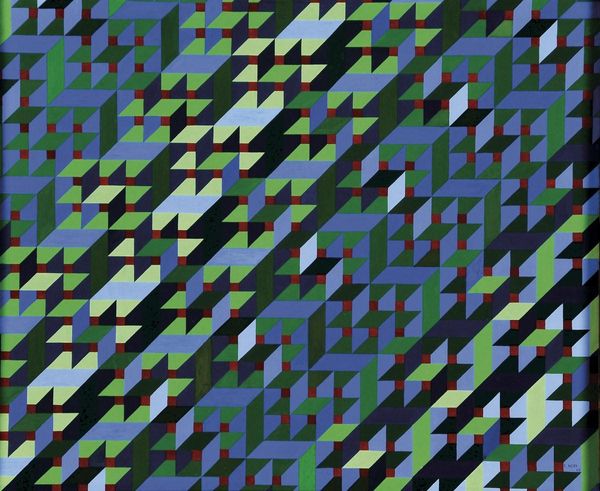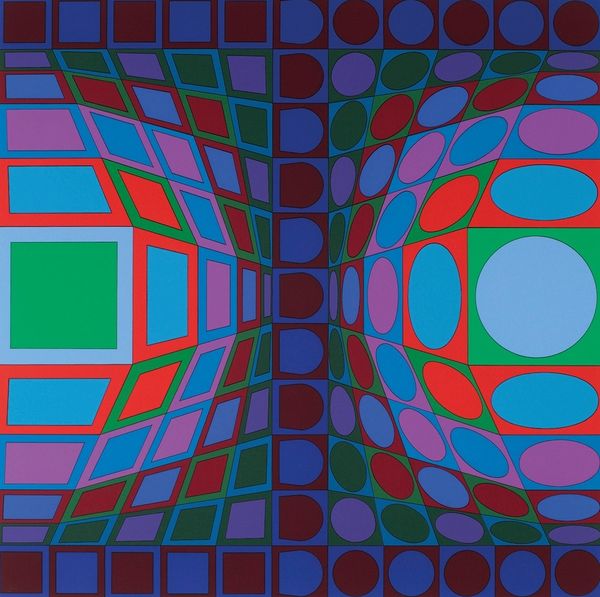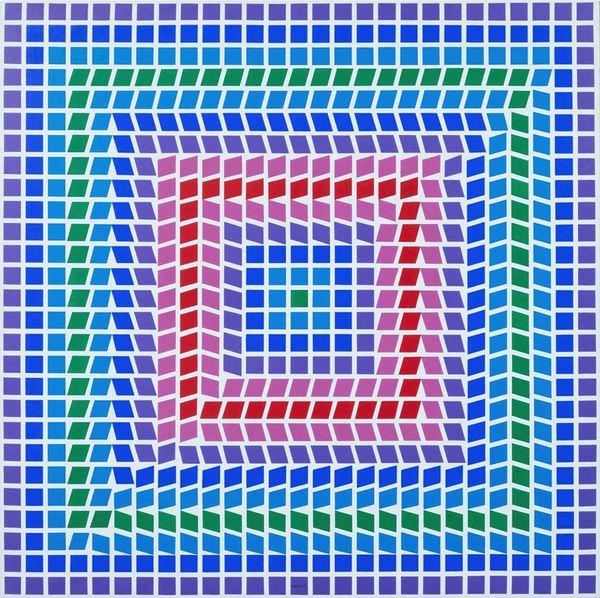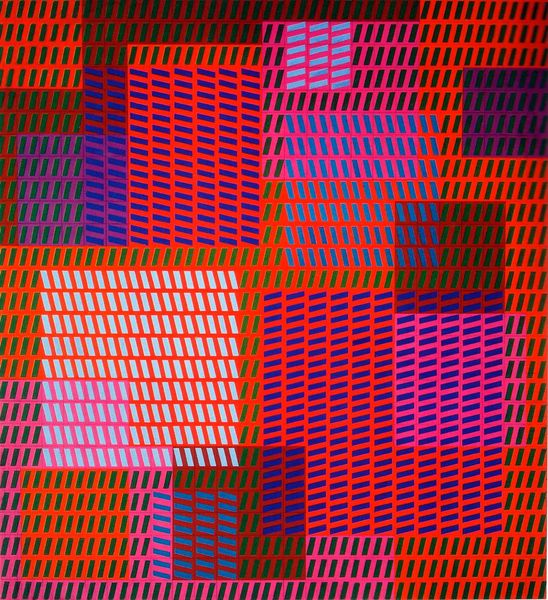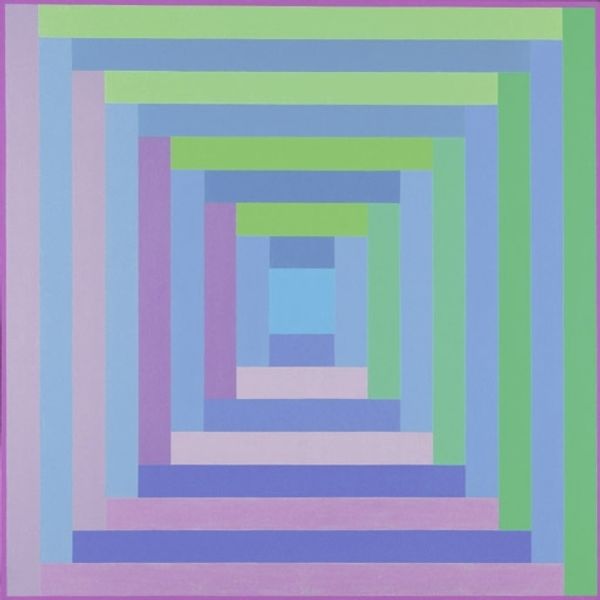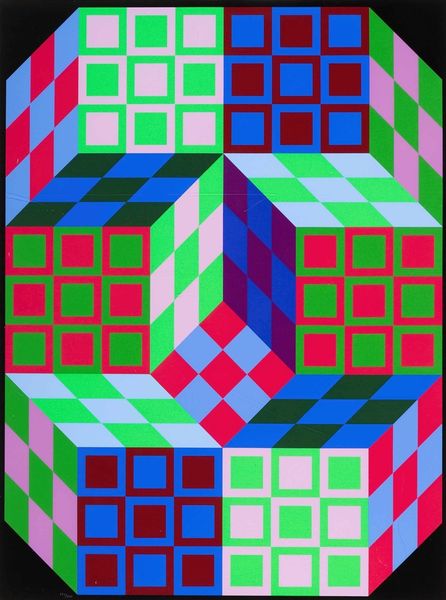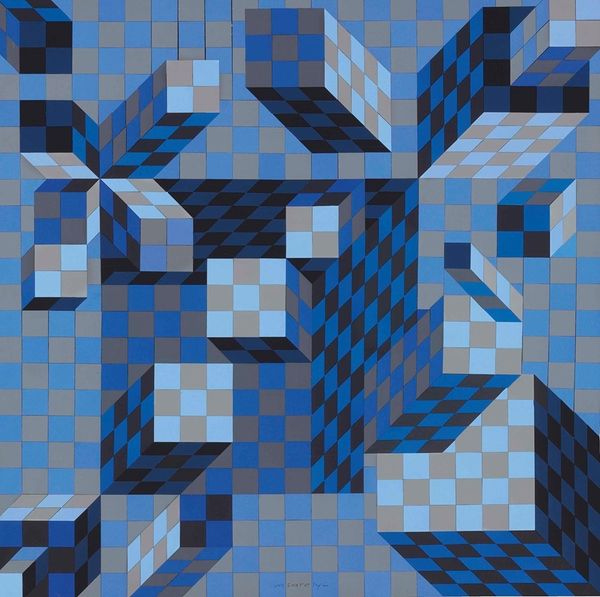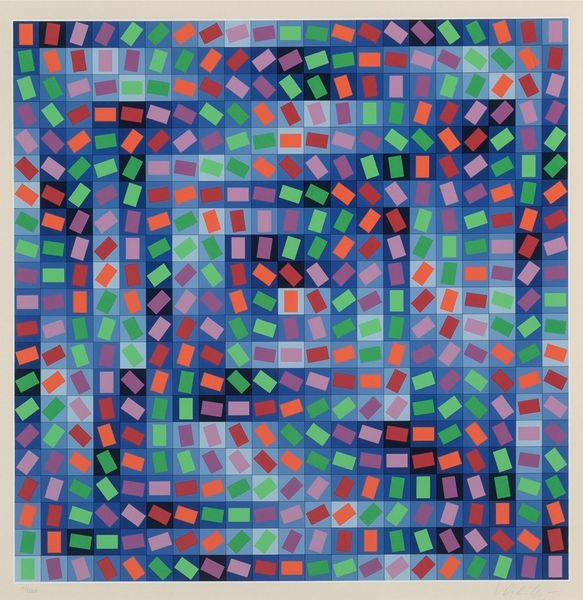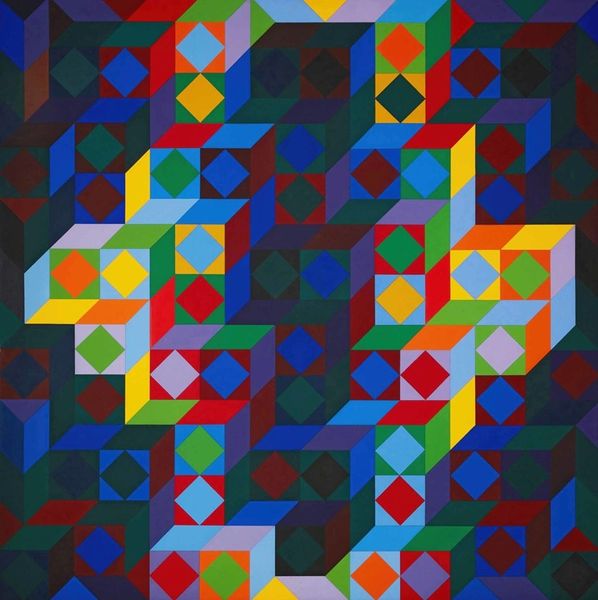
acrylic-paint
#
op-art
#
pattern
#
acrylic-paint
#
abstract
#
geometric pattern
#
abstract pattern
#
geometric
#
repetition of pattern
#
vertical pattern
#
abstraction
#
regular pattern
#
pattern repetition
#
layered pattern
#
combined pattern
#
modernism
#
repetitive pattern
Copyright: Modern Artists: Artvee
Curator: Welcome. Here we have Victor Vasarely's "Firaxo" from 1977, crafted using acrylic paint. It's a powerful example of his Op Art style. Editor: It's... disorienting! The patterns fight each other, making it hard to focus. It feels almost confrontational. Curator: Interesting. From a materialist perspective, Vasarely’s consistent use of acrylics allowed him to explore a smooth, even application of colour, crucial for achieving the illusion of depth and movement, don't you think? The surface lacks any obvious texture from brushstrokes. Editor: Absolutely. I can't help but think about the socio-political climate of the late '70s when this was made. The oil crisis, widespread social unrest – "Firaxo," with its unsettling visuals, seems to reflect the instability of the time. It embodies post-modern skepticism towards utopian visions. Curator: You’re highlighting its potential commentary. Op Art, however, moved away from direct political commentary, choosing instead to explore perception and how our eyes interpret visual information through simplified processes and geometry. Editor: But that removal IS the statement, right? Escapism, perhaps? Mass production and consumption, all those neat little checkerboard boxes remind me a bit of suburban conformity gone awry. Are those allusions just my projection? Curator: The painting technique itself embodies industrialized approaches by minimizing traces of the artist’s hand to produce sleek lines and colors for a consumerist audience eager for something 'new' from their factories during a moment of growing economic change worldwide. Editor: It’s almost architectural, too—a distorted urban landscape perhaps, one designed to both attract and alienate? How do the illusions of space engage or even confront viewers? Does the repetitive motif indicate labor, perhaps, an infinite factory churning out identical modules? Curator: One might interpret that within "Firaxo’s" aesthetic—Vasarely wasn't simply generating optical trickery. He engaged deeply with industrial methods and his artworks served in ways for democratizing the concept for fine art so the piece becomes not just decorative but something reproducible for design. Editor: Precisely. This makes it something everyone can own regardless their socioeconomic background by bringing abstract concepts straight into homes with consumer goods; challenging how art and decor influence class consciousness and material aspiration through accessible consumption. Curator: Yes, this changes my thinking and reveals new meanings, indeed. Editor: Same here. It is difficult to perceive something objective—so many different cultural associations change the material object completely!
Comments
No comments
Be the first to comment and join the conversation on the ultimate creative platform.
